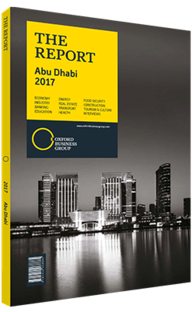Abu Dhabi prioritises protection of marine environment
With a coastline stretching 700 km, Abu Dhabi’s relationship with the sea has long been a key aspect of its culture and economy, and fishing remains a significant trade for Emiratis. In recent times the marine environment has faced multiple threats to its sustainability. A rapidly growing population and economic growth are driving coastal development, tourism and industrialisation, all of which place new demands on coastal waters.
Under Pressure
The environmental pressures are many. One comes from eutrophication – the growth of phytoplankton in coastal waters due to the increasing presence of nutrients, often from fertiliser runoff. Another is overfishing. Rising sea temperatures threaten many species’ long-term survival. Harmful algae blooms also affect fish stocks.
Other challenges include microbial contamination from the discharge of inadequately treated waste into the sea, sediments on the floor of offshore waters contaminated by industrial pollutants, and brine discharges from desalination plants. On top of this, some 35,000 commercial vessels and 100 cruise liners visit the emirate every year, many of which discharge waste that can impact the marine ecosystem.
Monitoring
As fisheries form one end of a chain that ultimately links back to human health, the state of the emirate’s marine environment has exercised sustainability planners.
The emirate’s leading body in this field is the Environment Agency - Abu Dhabi (EAD), and one of the EAD’s main goals is to protect human and marine life by ensuring good-quality sea water as well as protection of the marine environment.
Thanks to a network of offshore, beach and coastal zone stations, the EAD is able to monitor water quality across the emirate. These check temperature, pH, salinity and clarity. The agency also conducts laboratory testing for nutrients, organics, microbes and heavy metals. Since 2006 the EAD has been using the results to compile the Marine Water Quality Index (MWQI).
In 2016 the EAD launched a Sustainable Fisheries Programme in cooperation with the Ministry of Climate Change and Environment. A research vessel will survey fish resources, including the stocks and health of a number of key species. A series of other fish monitoring projects will be carried out at the same time, providing a baseline for future legislation.
Scorecards
According to an EAD report published in 2016, the MWQI shows that Abu Dhabi’s coastal waters are generally of good quality. Microbial water quality is excellent, particularly at public beaches, while eutrophication tends to be low, and declines as one moves away from the capital city. There are, however, site-specific instances of deterioration, leading the EAD to investigate the causes. Heavy metal contamination is low in both water and sediment.
MWQI data forms the basis for policy and is used to devise standards for marine water and sediment. Limits for three priority pollutants have been established: heavy metals, organics and microbes. As standards are developed and refined, the EAD issues these to industrial units, tourism facilities and other businesses, and ensures compliance in its role as issuer of environmental permits and enforcer of regulations. As research and monitoring of conditions is carried out, the EAD is able to constantly update its approach.
New initiatives are continually being launched. One is to make MWQI information available to all stakeholders online. The EAD also works with the Ministry of Education and NGOs to build awareness of the importance of the marine environment among youth. Protection of marine biodiversity is another aim, often pursued in cooperation with other regional states – tagging schemes, for example, allow scientists to monitor shark and ray populations in the Gulf. While challenges remain, monitoring and incentive schemes mean that Abu Dhabi’s marine environment is being scrutinised more than ever, and regulatory frameworks are being developed to ensure that the oceans remain healthy.
You have reached the limit of premium articles you can view for free.
Choose from the options below to purchase print or digital editions of our Reports. You can also purchase a website subscription giving you unlimited access to all of our Reports online for 12 months.
If you have already purchased this Report or have a website subscription, please login to continue.

